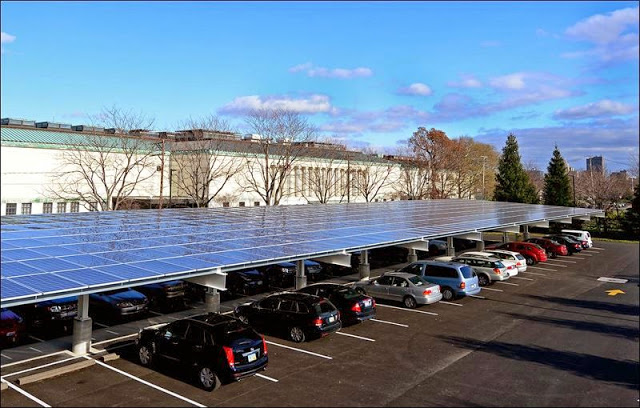How Museum Design Goes Green: Something Old and Something New
Friday, March 21, 2014 8:41 PM by Taylor Studios in Professional and Industry Tips

For every cutting edge new building, there are ten museums and nature centers that inhabit an older location. Sustainability isn’t limited to organizations with new construction, though, and there are many examples of green features that can be added to existing buildings. In many cases, the limitations of buildings with character and history inspire creative solutions to integrating sustainability. Here are four museums that have greened their existing buildings with an eye on cutting costs, helping the environment, and teaching visitors about sustainable choices.
Toledo Museum of Art
The Toledo Museum of Art has been pursuing savings via green initiatives for 20 years. Early steps included exchanging incandescent gallery lights with more efficient halogen fixtures during the day and using LED lights at night. Non-art areas use only fluorescent lighting. With recent advances in the color quality of LED bulbs, the museum has started changing all of its gallery lights to LEDs. Energy efficient, variable speed motors run the mechanical equipment. The majority of the roof of the main museum building is covered with solar panels, and a second major solar array was built over part of the parking lot. This means that on a sunny day, the museum can meet 50% of its electrical needs by the sun. On sunny spring days, before air conditioning is required, the museum has been able to go off the grid and give energy back to the power company!

The solar roof over the parking lot at the Toledo Museum of Art.
The Field Museum
The Field Museum in Chicago welcomes thousands of visitors yearly. Its extensive recycling program kept 368,000 pounds of recyclable materials from landfills in 2012, and it replaced hand towels with air driers in its restrooms. Instead of using regular commercial air-conditioning units during the hot months, it uses an innovative system that makes ice overnight when electricity usage is low. During the day, air is circulated around the ice to chill it before it’s sent through the building. The Field has a 99 Kilowatt solar array on its roof, and its power production can be tracked on the Museum’s website. A community vegetable garden was established on the Museum’s West Terrace to teach about urban gardening, heirloom seeds, and local food production.
Madison Children’s Museum
The Madison Children’s Museum in Madison, Wisconsin, uses a lot of reclaimed materials in both its interior common spaces and its exhibits, from old school bleacher boards to an entire log cabin moved to its city lot. When it expanded by moving from its former location into a former department store, the MCM emphasized its focus on reuse while helping keep the downtown area vibrant and active. Old exhibit components were updated and reused, while unique scrap materials (like an airplane fuselage!) became tables and parts of a huge climbing frame. The building has an extensive rooftop garden and exhibits area, along with an egg-producing chicken flock. The webpage offers a link to a fascinating downloadable PDF (their Green Guide) that describes the whole program in detail.
To help other institutions learn from their experiences, MCM created the organization Green Exhibits. Green Exhibits “was launched to provide museum exhibit designers and fabricators a resource for designing and building exhibits and environments that best support healthy spaces and a healthier future for kids and the environment.”
The Shedd Aquarium
The Shedd Aquarium in Chicago has an extensive sustainability program that covers energy use, water conservation, recycling, composting, gardening, and animal diets. A recent renovation to the Abbott Oceanarium allowed the Shedd to install waterless urinals, dual-flush toilets, and a rain catchment system on the roof. During this same renovation, the Shedd was able to recycle more than 97% of the construction and demolition waste involved. Due to the huge number of visitors they have every year, their food services offered several ways to both cut costs and cut waste. Reusable flatware and plates, cloth napkins, and compostable containers all help the Shedd reduce its footprint.
None of these institutions became a sustainability leader overnight. Each green initiative began with people committed to a step forward. Where can you start?
Share this on social networks